I always like to check out various kits such as EOD, First-Aid and Survival, Evasion, Resistance, and Escape versions.
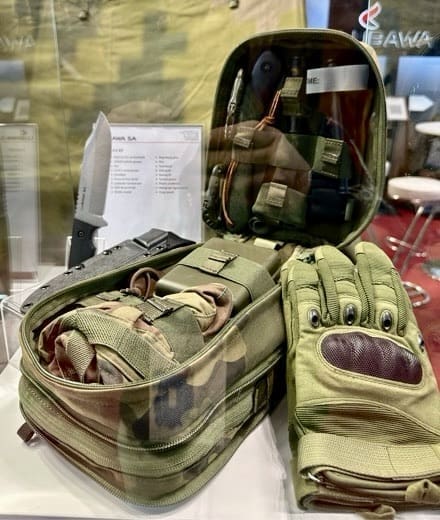
Poland’s Lubawa exhibited this SERE kit which packs all of the following items in a belt pouch.
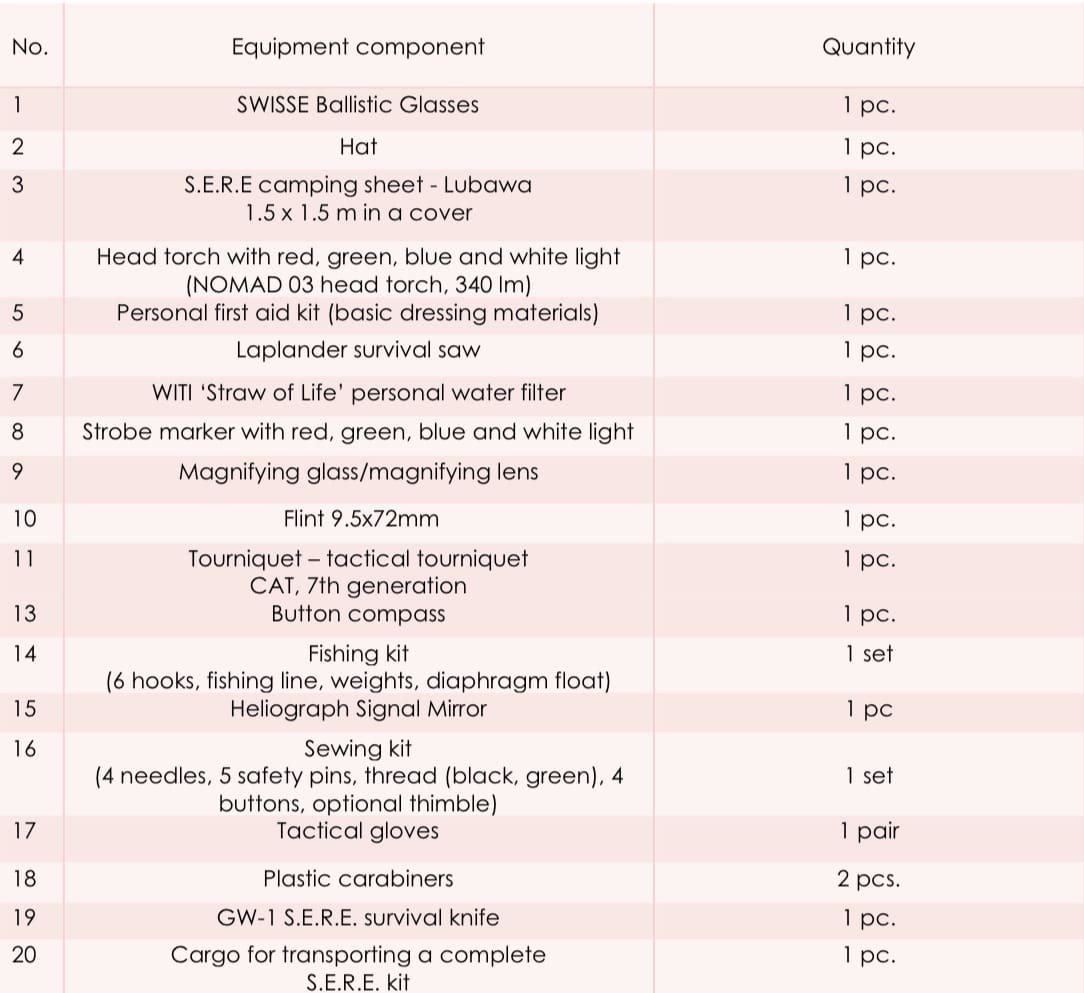
I always like to check out various kits such as EOD, First-Aid and Survival, Evasion, Resistance, and Escape versions.

Poland’s Lubawa exhibited this SERE kit which packs all of the following items in a belt pouch.

The poem “BOOTS” by Rudyard Kipling was published in 1903 and imagines the repetitive thoughts of a British Army infantryman marching in South Africa during the Second Boer War. It has been suggested for the first four words of each line to be read slowly, at a rate of two words per second, to match with the cadence, or rhythm of a foot soldier marching. Here, American actor Taylor Holmes does just that in this 1915 recording.
This will bring back memories to many of our readers who have graduated from one of America’s schools of higher learning in the craft of survival.
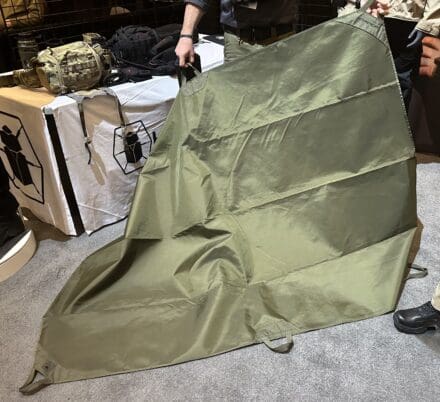
Making its debut at SHOT Show was the Kitanica T.A.R.P. which is an acronym for Tactical All-Purpose Rescue Platform.
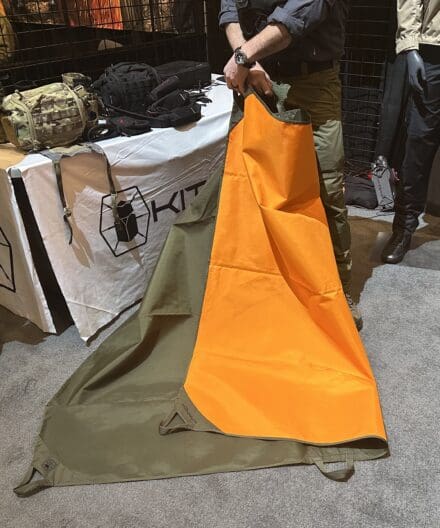
It is OD on one side and International Orange on the other to be used for signaling. Additionally, there are carry loops along the edge so it can be used as a stretcher. It also comes with a storage bag.
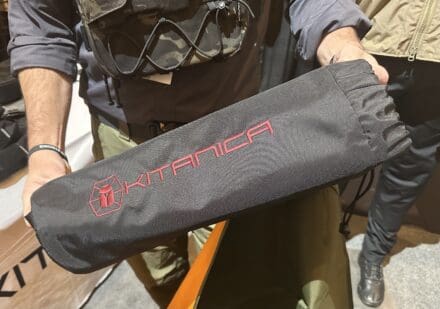
More details to come.
-Eric Graves
Editor
This never gets old. Is it wrong for me to miss the Cold War?
In my best Slim Pickens voice…
“Survival kit contents check. In them you’ll find:
– One forty-five caliber automatic
– Two boxes of ammunition
– Four days’ concentrated emergency rations
– One drug issue containing antibiotics, morphine, vitamin pills, pep pills, sleeping pills, tranquilizer pills
– One miniature combination Russian phrase book and Bible
– One hundred dollars in rubles
– One hundred dollars in gold
– Nine packs of chewing gum
– One issue of prophylactics
– Three lipsticks
– Three pair of nylon stockings.
Shoot, a fella could have a pretty good weekend in Vegas with all that stuff.”
-Major TJ “King” Kong
843rd Bomb Wing
Strategic Air Command
The MATBOCK Aviation Vest uses a variant of our Ghost Material that is significantly stronger and more durable than traditional fabrics currently used. This variant is FR. This version of the Aviation Kit was specifically designed to meet and exceed all NAVAIR FR standards.
The system weighs 6.5 lbs (2.9kg), compared to a CMU-37/P, which weighs 23.2 lbs (10.5kg), or a CMU-33/A, which weighs 14.4 lbs (6.5kg).
Our vest is well over 1/2 the weight of the current systems and is much more comfortable and user-friendly.
The floatation device will upright an unconscious patient 100% of the time. The pistol holster was designed for left—or right-handed shooters. It also allows the user to adjust the angle of the pistol.
For the lower body, the kit comes with a standalone leg harness system or when integrated with the HAALO belt. Below are both versions.
Here are a few more images showing the front, sides, and back of the MATBOCK Aviation Vest.
Stay tuned for other videos showing the vest, and next time, we will cover other features of the MATBOCK Aviation vest. If you are interested in getting some for your HELO Squadron to test, please reach out to PMA202 or you can reach out to MATBOCK at sales@matbock.com
ARLINGTON, Va. (AFNS) —
On Feb. 6, five Marines aboard a CH-53E Super Stallion helicopter belonging to the U.S. Marine Corps’ 3rd Marine Aircraft Wing were reported “overdue” while en route to San Diego, sparking a search and rescue mission for the missing service members.
The search efforts included members of Civil Air Patrol, who along with firefighters and other state, federal and local agencies located the aircraft the next day. Unfortunately, all five Marines on board were confirmed deceased.
“The night of the crash, we were alerted to the missing aircraft and spun up resources to find it,” said Lt. Col. Steven DeFord, incident commander for CAP’s California Wing. “Due to the bad weather in the area, we activated two aircraft from Arizona and got a ground search team to begin a search.”

DeFord explained members of CAP’s National Radar Analysis Team quickly found a radar track for the missing helicopter and gave the teams a helpful last-known position, which was roughly 300 feet away from the actual crash site. CAP began sharing the data with search parties within 30 minutes.
NRAT’s mission is to “shorten the crash to rescue time” by using advanced technologies and data sources developed by the experienced team. Once this team is activated, analysis and actionable data can be provided to others in minutes.
“With our analysis team’s 15 years of experience, and our team-built tools, we’ve become very skilled at analyzing radar data to determine where a probable crash site is located,” said Lt. Col. John C. Henderson, NRAT vice commander.
During the search, 35 CAP volunteers from across Nevada, Arizona and California collaborated to find the aircraft. The Air Force Rescue Coordination Center, located at Tyndall Air Force Base, Florida, was responsible for alerting local CAP agencies, allowing the Air Force to mediate between the other state and federal agencies on scene.
“We had two liaison officers interfacing with the numerous other agencies to coordinate our response,” DeFord added. “CAP provided radar forensics and ground electronic search capabilities, while other agencies provided mobility support and a location for a joint incident command post.”

Founded in 1941 and established as the official civilian auxiliary of the U.S. Air Force seven years later, Civil Air Patrol is chartered by Congress as a nonprofit organization for the purposes of youth development, aerospace education, and to promote general aviation. In an auxiliary role as a Total Force partner of the Air Force, CAP operates the world’s largest fleet of single-engine aircraft for search and rescue, disaster relief, training, and education. The all-volunteer force is made up of more than 66,000 members nationally.
The California Wing engages in multiple exercises weekly, aiding mission partners such as the U.S. Coast Guard by flying multiple aircraft throughout the state to ensure direction-finding coverage to support their lifesaving missions. Additionally, its volunteers stand by to support in-state and federal search and rescue missions looking for emergency location transmitters and missing persons.
No matter the outcome, CAP and its volunteers work alongside the Air Force to provide trained search and rescue professionals and crash data analytics to quickly respond to any event to which they’re called.
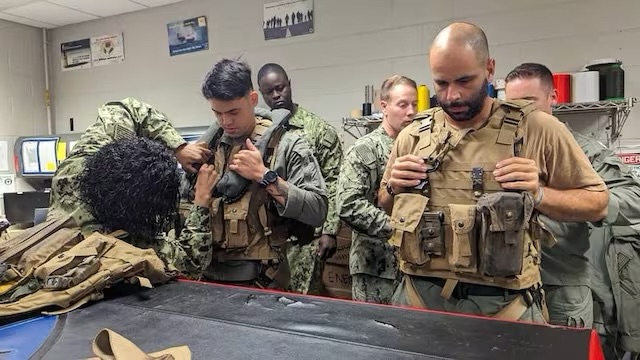
NAVAL AIR SYSTEMS COMMAND, PATUXENT RIVER, Md.
—
The Naval Aircrew Systems Program Office (PMA-202) aircrew survival vest team is testing new rotary wing and tilt aircrew survival vest systems that will optimize aircrew performance with a lighter, less bulky and more ergonomically suitable solution.
The team is evaluating the new vest systems for their ability to reduce instances of overheating, increase overall comfort and reduce the potential for short and long term back and neck injury of pilots and aircrew due to the bulkiness and imbalanced weight of the legacy systems.
“As mission lengths continue to increase, it’s an imperative that we integrate new design features and provide vest systems that meet fleet requirements in a comfortable, lightweight solution,” said Capt. Carey Castelein, PMA-202 program manager.
A number of MH-60R, MH-60S, MH-53E and CMV-22 pilots, aircrew and maintainers are currently assessing the vests to ensure the solutions meet their needs and enhance operational capability. Pilots and aircrew are flying with the new vest systems and providing real-time user input on what features work and what needs improvement.
“Through research, test and fleet assessments, our team will determine the best possible solution to optimize aircrew performance with a lighter, less bulky and more buoyant system, taking into account performance and user feedback,” said Cindy Stead, PMA-202 Aircrew Survival Vest team lead.
Each operator needs a comfortable vest that can be worn for long periods of time, does not cause overheating, distributes weight evenly, fits well, and enables the wearer to be highly mobile for in-cockpit visual scanning and physical movement. Additionally, vests need to be buoyant in post-crash survival and evasion scenarios.
The fleet assessments began on the West coast this summer and continue on the East Coast over the next few months. The Navy may potentially field multiple survival vests depending on aircrew mission after completion of fleet assessments.
By PMA-202
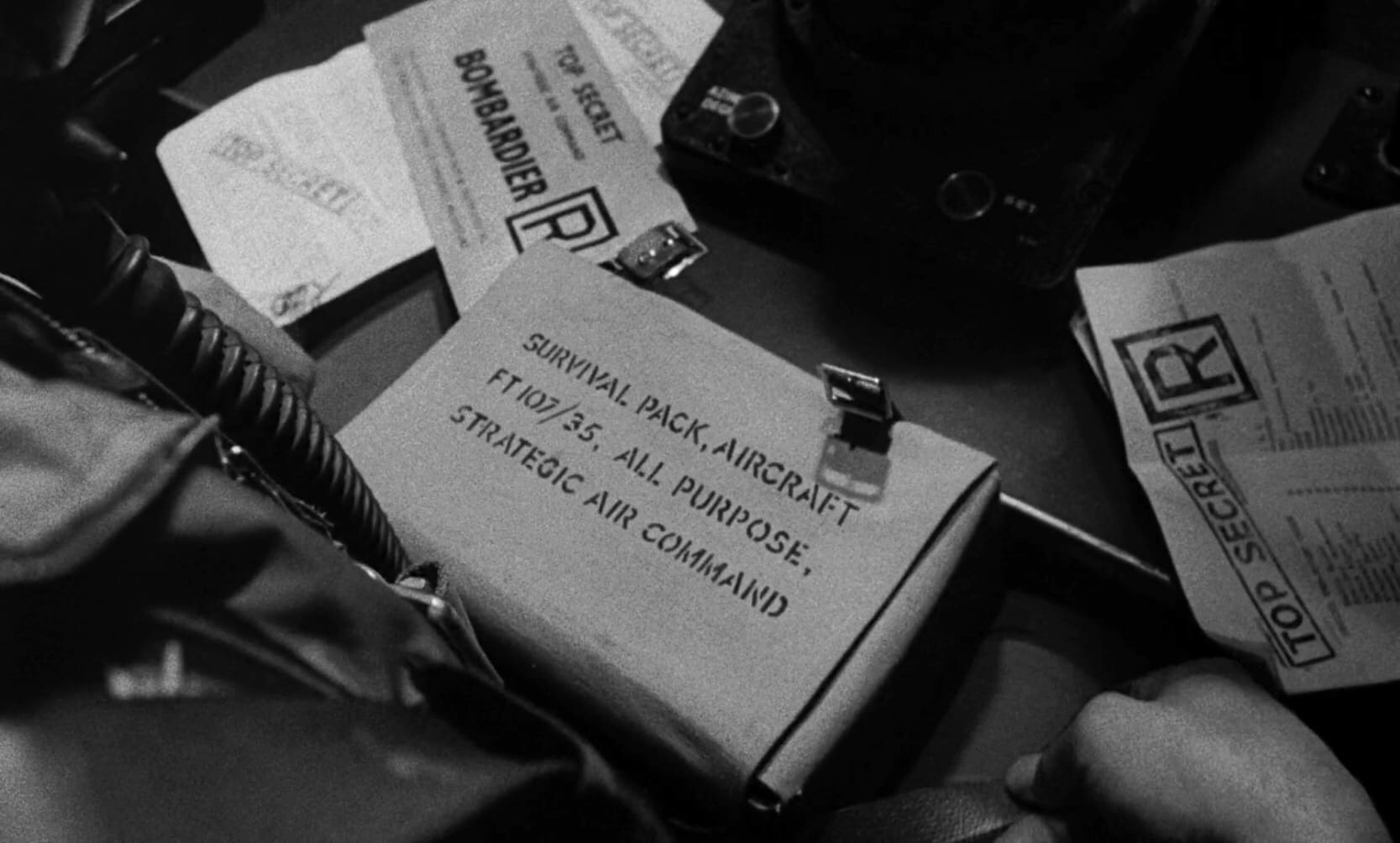
“Survival kit contents check. In them you’ll find:
– One forty-five caliber automatic
– Two boxes of ammunition
– Four days’ concentrated emergency rations
– One drug issue containing antibiotics, morphine,
vitamin pills, pep pills, sleeping pills, tranquilizer pills
– One miniature combination Russian phrase book and Bible
– One hundred dollars in rubles
– One hundred dollars in gold
– Nine packs of chewing gum
– One issue of prophylactics
– Three lipsticks
– Three pair of nylon stockings.

Shoot, a fella’ could have a pretty good weekend in Vegas with all that stuff.”
Major T. J. “King” Kong